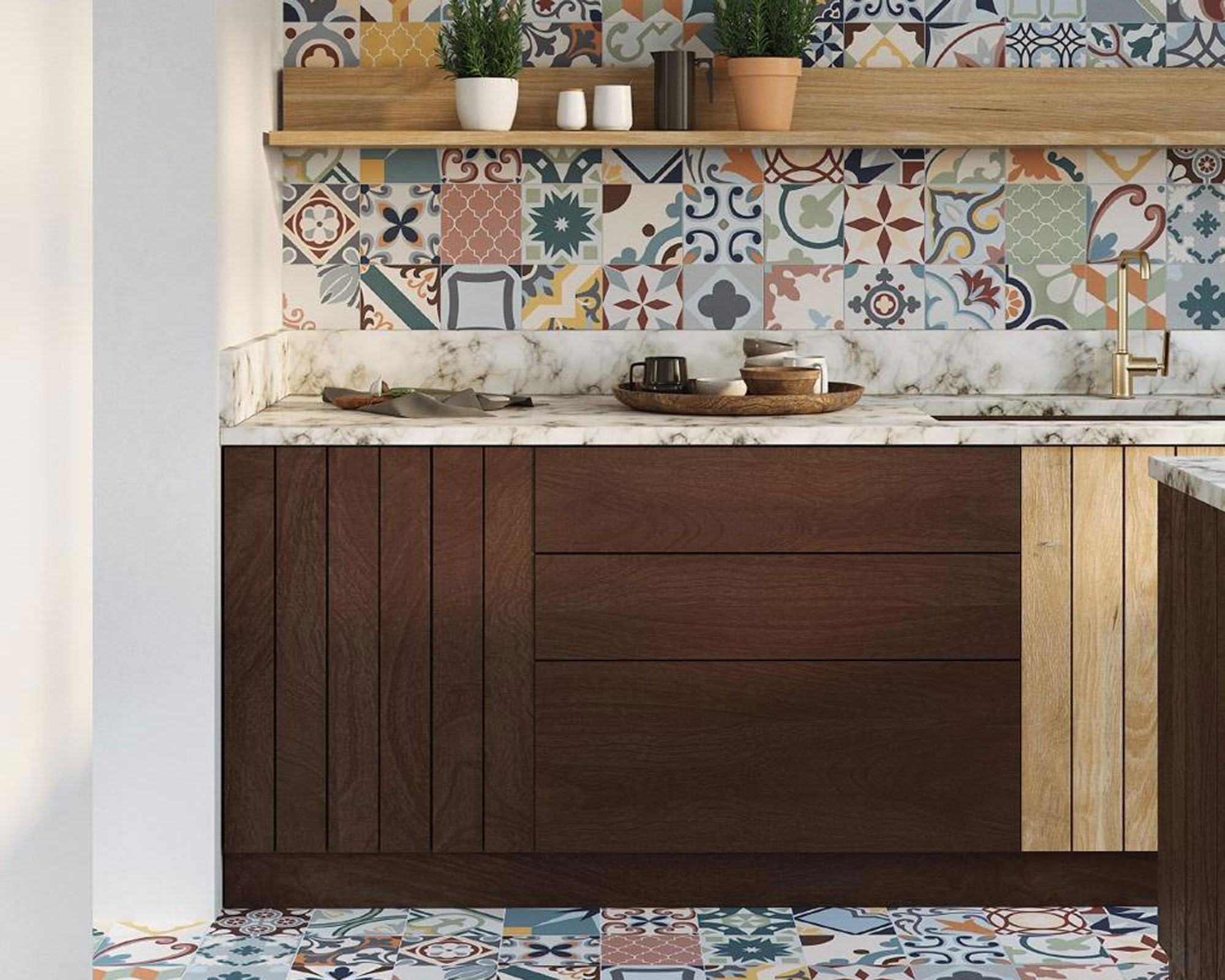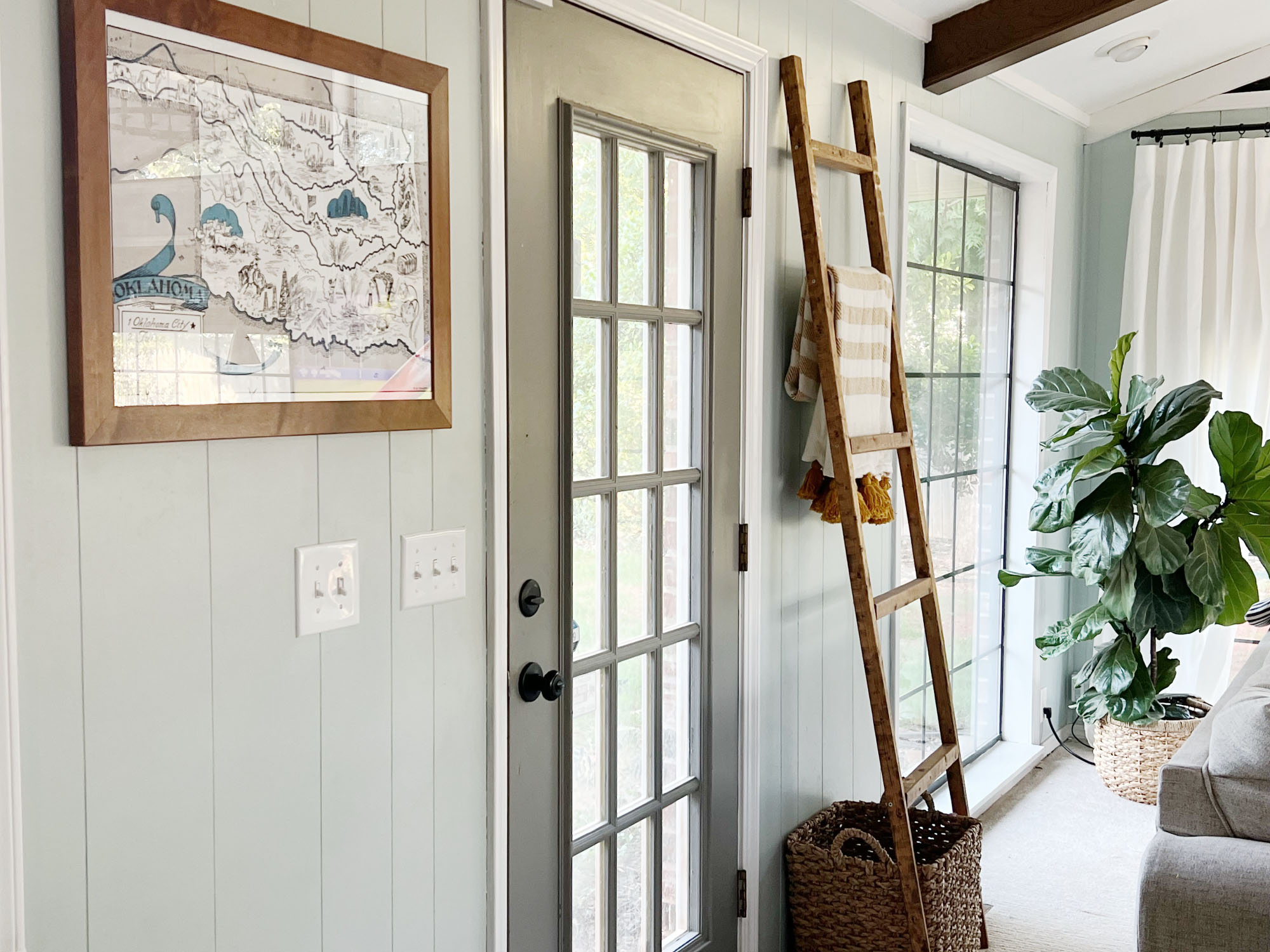

Knowing how to install countertops in your kitchen could save you a ton of money when you're remodeling. Swapping out and replacing kitchen countertops that are damaged, looking tired, or old fashioned can give your room a whole new lease of life with very little disruption.
And the good news is that if you have previous DIY experience, installation is a job you could do yourself. Factoring new countertops into your kitchen remodel costs is a must, and fitting them yourself is a great way to refresh without spending more than you can afford.
Here you’ll find what you need to know about installing countertops along with top tips from the experts. But a word to the wise first. There are some counter materials that we don’t recommend for do-it-yourself installation, and we’ve got the lowdown on which these are for you.
How to install countertops: the know-how you need
If your kitchen cabinets are sound, and the layout effective, new counters can be all it takes to update your kitchen, and knowing how to install countertops will allow you to save the cost of labor.
How to install laminate countertops
If you're installing countertops yourself, we would recommend choosing laminate. Laminate countertops come in an enormous range of colors and effects allowing them to mimic the appearance of more expensive materials.
Before you buy, you will need to measure carefully in order to buy the right length of countertop. Measure the length of countertop required, allowing an overhang unless it is to be flush. Check, too, that the cabinet depth is a standard 23.75 inch (60cm), allowing the countertop a small overhang.
‘Another great way to measure is to use an oversized piece of cardboard to create a template of your countertop and trace the area,’ says Bailey Carson, home care expert at Angi. ‘This cardboard will allow you to have exact measurements when you’re purchasing your materials.’
1. Cut countertops to size
Use a fine-tooth saw to cut the laminate board to the right length. The edges can be neatened with a file. Measure very carefully before cutting to avoid expensive errors.
2. Position the countertop on the base cabinets
With someone to help you lift, set the countertop on top of the base cabinets. Push it snugly against the wall, and against any corner it meets.
Adjust as necessary so that the overhang at the front is even; it may not be if the wall behind it isn’t even.
3. Adjust the fit of the countertop
If the wall is uneven, you will need to adjust the countertop for a neat fit by scribing the line of the wall.
Clamp the countertop in place and put a strip of masking tape along the back edge so that you can mark a pencil line along it.
Set a compass to the largest gap between countertop and wall. Keeping it at a right angle to the wall run the point along the wall so the pencil draws a line along the masking tape.
Move the countertop on to a pair of saw horses or work benches and use a Surform plane to shape it to the line.
4. Fit end trim
Where the countertop finishes at a wall or appliance or overhangs a base cabinet, it will need matching laminate trim on the exposed edge. It may come with an iron-on trim or you may need to use contact adhesive according to instructions to apply the trim. Trim the edges with a craft knife and use a file on any rough edges.
5. Fix the countertop
To fix the countertop in place first drill clearance holes into the framing of the cabinet; three screws at the front and three at the back of each cabinet should be sufficient.
Put the countertop in place on the base cabinets and drill upwards through the clearance holes in the framing into the countertop. Make sure you don’t break through the countertop – you might want to mark the drill bit with masking tape as a depth guide. Use wood screws in each fixing position.
Fit countertops around a corner
If the countertop goes around a corner, a joining strip will be needed. Scribe the second section to the wall as above, then screw the joining strip to the second countertop length, butt it up to the first ,and secure it in place from below.
Can you install countertops yourself?
If you're planning to install kitchen counters yourself, be aware that not every type of countertop is suitable for DIY installation. ‘In order to install stone or quartz countertops you are going to have to fabricate the countertops to fit the exact size needed for your kitchen,’ explains Bill Samuel, Illinois licensed general contractor and residential real estate developer at Blue Ladder Development.
‘This means you will have to cut the stone to fit the layout of your kitchen cabinets and sink location. Unfortunately fabricating granite and quartz requires large specialized heavy equipment to cut the countertops that requires warehouse space. However, countertops such as laminate and butcher block can be cut with basic power tools allowing for a DIY installation.’
Owner and creator of Countertop Specialty Ryan Burden suggests prefabricated laminate as the best option. ‘Prefabricated laminate countertops make DIY installation a snap,’ he says. ‘The only fundamental skills needed are the ability to measure and cut wood. The laminate is already formed and glued onto the fiberboard backing with an edge and backsplash.’
Fitting quartz, quartzite, marble, and granite countertops
What about how to install countertops made from materials other than laminate? In fact, it isn’t generally the case that you’ll be able to buy your chosen material for DIY fitting if engineered stone quartz, or natural quartzite, marble, or granite are your preference. ‘Few stone warehouses will sell granite, quartz, or marble slabs directly to the homeowner. So, you’re likely out of luck from square one,’ says Ryan Burden.
‘Cutting granite, marble, or quartzite to the precise dimensions of your countertop requires the use of large specialized machinery or a lot of skill and experience,’ he adds.
And bear weight in mind, too. ‘Countertop slabs – especially if you opt for stone – can be extremely heavy and hard to move,’ says Bailey Carson.
Weight counts for another reason. ‘Countertops like granite and quartzite are far heavier than laminate countertops, and your cupboards must be capable of supporting that weight,’ says Melanie Musson, a home improvement expert with Expert Insurance Reviews.
Our recommendation? Call in a pro if your preference is for any of these materials.
Join our newsletter
Get small space home decor ideas, celeb inspiration, DIY tips and more, straight to your inbox!

Sarah is a freelance journalist and editor writing for websites, national newspapers, and magazines. She’s spent most of her journalistic career specialising in homes – long enough to see fridges become smart, decorating fashions embrace both minimalism and maximalism, and interiors that blur the indoor/outdoor link become a must-have. She loves testing the latest home appliances, revealing the trends in furnishings and fittings for every room, and investigating the benefits, costs and practicalities of home improvement. It's no big surprise that she likes to put what she writes about into practice, and is a serial house revamper. For Realhomes.com, Sarah reviews coffee machines and vacuum cleaners, taking them through their paces at home to give us an honest, real life review and comparison of every model.
-
 A $200 fluted panel transformed my drab kitchen in just one weekend
A $200 fluted panel transformed my drab kitchen in just one weekendHow to install a fluted kitchen panel: A speedy and achievable DIY tutorial even for DIY novices
By Claire Douglas Published
-
 How to replace a broken staircase spindle in 30 minutes flat
How to replace a broken staircase spindle in 30 minutes flatA missing or broken spindle on a staircase is not only unsightly, but it can be a real hazard. This is how to fix it in a few quick steps.
By Kate Sandhu Published
-
 An IKEA Billy bookcase hack inspired this cute media wall DIY
An IKEA Billy bookcase hack inspired this cute media wall DIYThis cute DIY was inspired by an IKEA Billy bookcase hack and brought a ton of symmetry to an otherwise basic media wall space.
By Camille Dubuis-Welch Published
-
 Share your small space glow up to win $150 in the Real Homes competition
Share your small space glow up to win $150 in the Real Homes competitionShow off your creativity and DIY skills to win $150 and for the chance to be featured exclusively in Real Homes magazine
By Camille Dubuis-Welch Last updated
-
 This oversized headboard looks designer, and takes 5 steps to DIY
This oversized headboard looks designer, and takes 5 steps to DIYSuper simple to DIY, this oversized headboard will give your bedroom space all the designer vibes you could dream of.
By Claire Douglas Published
-
 My DIY range hood and backsplash build gave my kitchen the perfect farmhouse finish
My DIY range hood and backsplash build gave my kitchen the perfect farmhouse finishI craved charm in my kitchen space and adding a custom range hood and shelving was the best move.
By Brooke Waite Published
-
 How to paint a radiator in 7 steps
How to paint a radiator in 7 stepsPainting radiators properly is all about choosing the right paint and the best process. Get interior designer-worthy results with our how-to.
By Kate Sandhu Published
-
 How to install a door knob
How to install a door knobUpdating your interior and exterior doors can be as easy as changing out the hardware! The best part is that installing a door knob is very DIY friendly. Follow these simple steps and enjoy a fresh look on your doors!
By Dori Turner Published